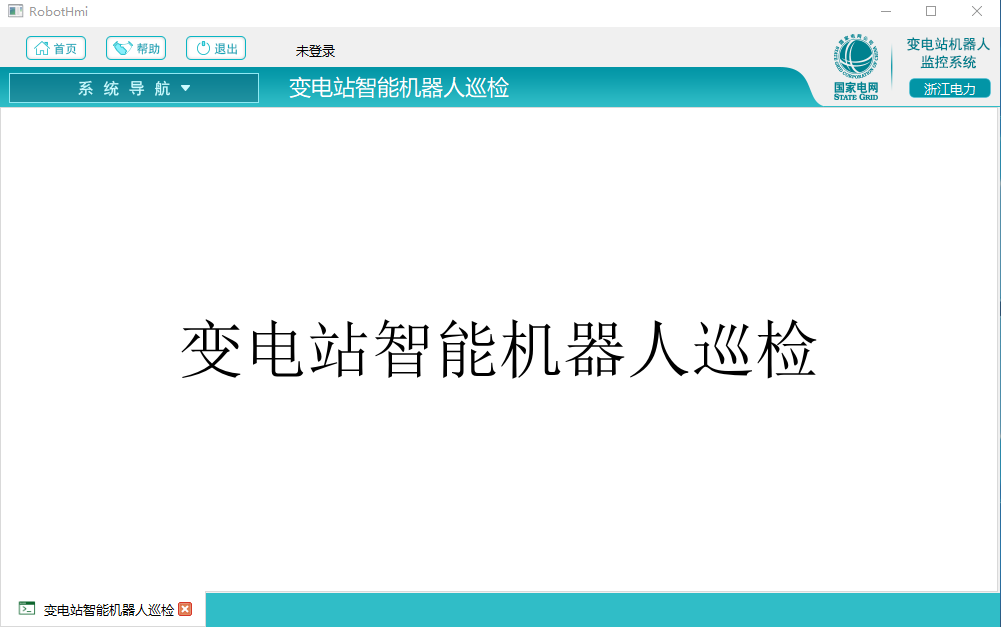【2019年2月26日】SpringBoot | 第二篇:SpringBoot配置详解
- **本文作者:**仓颉
SpringBoot是为了简化Spring应用的创建、运行、调试、部署等一系列问题而诞生的产物,自动装配的特性让我们可以更好的关注业务本身而不是外部的XML配置,我们只需遵循规范,引入相关的依赖就可以轻易的搭建出一个 WEB 工程
上一篇介绍了SpringBoot由来及构建方式,通过第一章的教程我们对SpringBoot不在感到陌生,可以发现SpringBoot虽然干掉了 XML 但未做到零配置,它体现出了一种约定优于配置,也称作按约定编程,是一种软件设计范式,旨在减少软件开发人员需做决定的数量,获得简单的好处,而又不失灵活性。一般情况下默认的配置足够满足日常开发所需,但在特殊的情况下,我们往往需要用到自定义属性配置、自定义文件配置、多环境配置、外部命令引导等一系列功能。不用担心,这些SpringBoot都替我们考虑好了,我们只需要遵循它的规则配置即可
准备前提
为了让SpringBoot更好的生成数据,我们需要添加如下依赖(该依赖可以不添加,但是在 IDEA 和 STS 中不会有属性提示,没有提示的配置就跟你用记事本写代码一样苦逼,出个问题弄哭你去),该依赖只会在编译时调用,所以不用担心会对生产造成影响…
<dependency>
<groupId>org.springframework.boot</groupId>
<artifactId>spring-boot-configuration-processor</artifactId>
<optional>true</optional>
</dependency>
自定义属性配置
在application.properties写入如下配置内容
my1.age=25
my1.name=Luis
其次定义MyProperties1.java文件,用来映射我们在application.properties中的内容,这样一来我们就可以通过操作对象的方式来获得配置文件的内容了
package com.winterchen.properties;
import org.springframework.boot.context.properties.ConfigurationProperties;
import org.springframework.stereotype.Component;
/** * Created by Donghua.Chen on 2018/6/1. */
@Component
@ConfigurationProperties(prefix = "my1")
public class MyProperties1 {
private int age;
private String name;
// 省略 get set
@Override
public String toString() {
return "MyProperties1{" +
"age=" + age +
", name='" + name + '\'' +
'}';
}
}
接下来就是定义我们的PropertiesController用来注入MyProperties1测试我们编写的代码,值得注意的是Spring4.x以后,推荐使用构造函数的形式注入属性…
package com.winterchen.controller;
import com.winterchen.properties.MyProperties1;
import org.slf4j.Logger;
import org.slf4j.LoggerFactory;
import org.springframework.beans.factory.annotation.Autowired;
import org.springframework.web.bind.annotation.GetMapping;
import org.springframework.web.bind.annotation.RequestMapping;
import org.springframework.web.bind.annotation.RestController;
/** * Created by Donghua.Chen on 2018/6/1. */
@RequestMapping("/properties")
@RestController
public class PropertiesController {
private static final Logger log = LoggerFactory.getLogger(PropertiesController.class);
private final MyProperties1 myProperties1;
@Autowired
public PropertiesController(MyProperties1 myProperties1) {
this.myProperties1 = myProperties1;
}
@GetMapping("/1")
public MyProperties1 myProperties1() {
log.info("=================================================================================================");
log.info(myProperties1.toString());
log.info("=================================================================================================");
return myProperties1;
}
}
打开浏览器,输入如下地址:http://localhost:8080/properties/1,观察控制台,监听到如下内容则表示程序正确
2018-06-01 12:22:13.846 INFO 37514 --- [nio-8080-exec-1] c.w.controller.PropertiesController : =================================================================================================
2018-06-01 12:22:13.850 INFO 37514 --- [nio-8080-exec-1] c.w.controller.PropertiesController : MyProperties1{age=25, name='Luis'}
2018-06-01 12:22:13.851 INFO 37514 --- [nio-8080-exec-1] c.w.controller.PropertiesController : =================================================================================================
自定义文件配置
定义一个名为my2.properties的资源文件,自定义配置文件的命名不强制application开头
my2.age=25
my2.name=Luis
my2.email=1085143002@qq.com
其次定义MyProperties2.java文件,用来映射我们在my2.properties中的内容。
package com.battcn.properties;
import org.springframework.boot.context.properties.ConfigurationProperties;
import org.springframework.context.annotation.PropertySource;
import org.springframework.stereotype.Component;
/** * @author Levin * @since 2018/4/23 0023 */
@Component
@PropertySource("classpath:my2.properties")
@ConfigurationProperties(prefix = "my2")
public class MyProperties2 {
private int age;
private String name;
private String email;
// 省略 get set
@Override
public String toString() {
return "MyProperties2{" +
"age=" + age +
", name='" + name + '\'' +
", email='" + email + '\'' +
'}';
}
}
接下来在PropertiesController用来注入MyProperties2测试我们编写的代码
private final MyProperties1 myProperties1;
private final MyProperties2 myProperties2;
@Autowired
public PropertiesController(MyProperties1 myProperties1, MyProperties2 myProperties2) {
this.myProperties1 = myProperties1;
this.myProperties2 = myProperties2;
}
@GetMapping("/2")
public MyProperties2 myProperties2() {
log.info("=================================================================================================");
log.info(myProperties2.toString());
log.info("=================================================================================================");
return myProperties2;
}
打开浏览器,输入如下地址:http://localhost:8080/properties/2,观察控制台,监听到如下内容则表示程序正确
2018-06-01 12:29:38.634 INFO 38345 --- [nio-8080-exec-2] c.w.controller.PropertiesController : =================================================================================================
2018-06-01 12:29:38.634 INFO 38345 --- [nio-8080-exec-2] c.w.controller.PropertiesController : MyProperties2{age=25, name='Luis', email='1085143002@qq.com'}
2018-06-01 12:29:38.634 INFO 38345 --- [nio-8080-exec-2] c.w.controller.PropertiesController : =================================================================================================
多环境化配置
在真实的应用中,常常会有多个环境(如:开发,测试,生产等),不同的环境数据库连接都不一样,这个时候就需要用到spring.profile.active的强大功能了,它的格式为application-{profile}.properties,这里的application为前缀不能改,{profile}是我们自己定义的。
创建application-dev.properties、application-test.properties、application-prod.properties,内容分别如下
application-dev.properties
server.servlet.context-path=/dev
application-test.properties
server.servlet.context-path=/test
application-prod.properties
server.servlet.context-path=/prod
在application.properties配置文件中写入spring.profiles.active=dev,这个时候我们在次访问http://localhost:8080/properties/1就没用处了,因为我们设置了它的context-path=/dev,所以新的路径就是http://localhost:8080/dev/properties/1,由此可以看出来我们激活不同的配置读取的属性值是不一样的
外部命令引导
前面三种方式都是基于配置文件层面的,那么有没有办法外部引导呢,假设这样的场景,我们对已经开发完成的代码打包发布,期间在测试环境测试通过了,那么即可发布上生产,这个时候是修改application.properties的配置方便还是直接在命令参数配置方便呢,毫无疑问是后者更有说服力。默认情况下,SpringApplication会将命令行选项参数(即:–property,如–server.port=9000)添加到Environment,命令行属性始终优先于其他属性源。
如何测试?
- 进入到项目目录,此处以我本地目录为主:/Users/Winterchen/Documents/mygit/springboot-learning-experience/spring-boot-config
- 然后打开 cmd 程序,不会在当前目录打开 cmd 的请自行百度,输入:
mvn package - 打包完毕后进入到:/Users/Winterchen/Documents/mygit/springboot-learning-experience/spring-boot-config/target 目录中去,我们可以发现一个名为spring-boot-config-0.0.1-SNAPSHOT.jar的包
- 接着在打开 cmd 程序,输入:
java -jar spring-boot-config-0.0.1-SNAPSHOT.jar --spring.profiles.active=test --my1.age=32。仔细观察**spring.profiles.active=test、my1.age=32**这俩配置的键值是不是似曾相识(不认识的请从开头认真阅读) - 最后输入测试地址:http://localhost:8080/test/properties/1我们可以发现返回的JSON变成了**
{"age":32,"name":"Luis"}**表示正确
总结
- 掌握
@ConfigurationProperties、@PropertySource等注解的用法及作用 - 掌握编写自定义配置
- 掌握外部命令引导配置的方式
- 本文标签: Spring Boot Spring
- 本文链接: http://www.unknowtime.top/article/94
- 版权声明: 本文为互联网转载文章,出处已在文章中说明(部分除外)。如果侵权,请联系本站长删除,谢谢。










